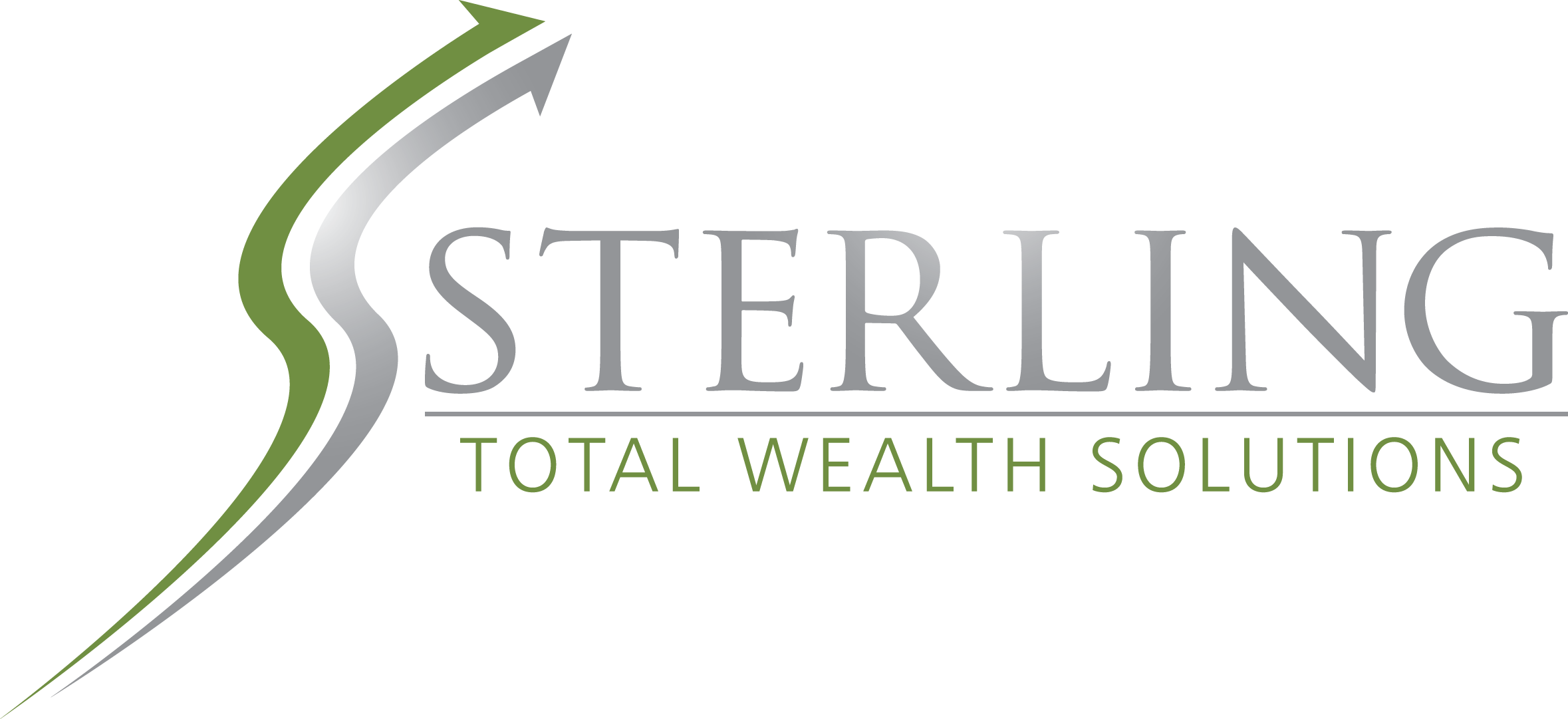In this month’s recap: The coronavirus becomes the leading news story in the financial markets, sending stock indices and Treasury yields lower; oil futures slide; consumer confidence, hiring, and manufacturing data offer bright spots.
Monthly Economic Update
Monthly Economic Update | Presented by Sterling Wealth Advisors | March 2020
In February, anxieties about the novel coronavirus (COVID-19) rippled through stock, bond, and commodity markets. Stories about the disease dominated the news cycle, and concerns that a pandemic might occur hurt equities. The S&P 500 slipped 8.41% for the month, and foreign stock markets also retreated. Oil tumbled below $50. Away from the trading floors, the latest fundamental economic indicators showed manufacturing and job creation strengthening and consumer confidence at high levels. Data on home sales were mixed; home loans grew less expensive.1
Past the coronavirus headlines, the latest round of U.S. economic indicators appeared largely encouraging.
The Department of Labor’s January jobs report topped the expectations of economists surveyed by Bloomberg: while they forecast 165,000 net new hires, the gain was actually 225,000. The labor force participation rate (the percentage of people either working or looking for work) hit 63.4%, a level unseen since 2013. The main jobless rate rose 0.1% to 3.6%, and the U-6 rate, counting the underemployed and the unemployed, rose 0.2% to 6.9%. Hourly wages were up 3.1% year-over-year.2
American manufacturing picked up its pace, according to the Institute for Supply Management (ISM). January’s ISM Factory Purchasing Managers Index, or PMI, came in at 50.9, a rise of 3.1 points, which signaled the first sector expansion in six months. ISM data also showed monthly improvements in new orders, prices for manufactured goods, and employment. The Institute’s Non-Manufacturing PMI rose half a point to 55.5 in January.2,3
Just how did some of the big foreign benchmarks fare in February? Broadly speaking, they fared worse than our major equity indices. Among the least hurt: Hong Kong’s Hang Seng, falling 0.43%; China’s Shanghai Composite, down 3.23%; Malaysia’s KLCI, off 4.45%; India’s Nifty 50, slipping 7.08%.11,12
Other losses were steeper. Mexico’s Bolsa tumbled 7.59%; Australia’s All Ordinaries, 8.27%; South Korea’s Kospi, 8.72%; Japan’s Nikkei 225, 8.93%. MSCI’s multi-regional EAFE index took a 9.23% fall. Double-digit drops came for France’s CAC-40 (10.39%), Brazil’s Bovespa (10.57%), Germany’s DAX (10.76%), and Russia’s RTS (17.33%).11,13
COMMODITIES MARKETS
The rollercoaster ride of gold and the fall of oil stood out in the commodities sector last month. Gold jumped above $1,650 on the New York Mercantile Exchange (NYMEX) late in the month, then abruptly slipped from that level, closing at $1,585.30 on February 28 and recording a monthly loss of 0.44%. Meanwhile, energy traders grew uneasy about global oil demand in the wake of more COVID-19 cases, and this influenced the performance of West Texas Intermediate crude, which declined 12.73% in February to a month-ending NYMEX price of $44.97. The U.S. Dollar Index rose 0.24% for the month, closing out February at 98.10.14,15
How did other commodity futures perform? In the energy sector, unleaded gasoline declined just 0.52%, while heating oil fell 8.95%, and natural gas retreated 8.41%. Silver, which ended February at a NYMEX price of $16.54, sank 7.94%. Platinum dipped 10.48 in February, while copper rose 1.09%. Among ag futures, corn lost 4.06%; wheat, 4.47%; cotton, 3.70%; sugar, 1.51%. Coffee improved 5.53%; cocoa, 2.46%; soybeans, 1.35%.14
REAL ESTATE
Late last month, 10-year Treasury yields fell to record lows, with positive implications for prospective homebuyers. Mortgage rates tend to move in the direction of Treasury yields. Freddie Mac’s February 27 Primary Mortgage Market Survey showed the mean interest rate on a 30-year home loan at 3.45%, down 0.90% across the past 12 months. For the 15-year loan, the number was 2.95%, down 0.82% year-over-year. (In the January 30 PMMS, the average interest rate for a 30-year mortgage was at 3.51%; the average interest rate for a 15-year mortgage, at 3.00%.)16,17
Data from the National Association of Realtors showed existing home sales retreating 1.3% in January. A seller’s market remained firmly in place. There was just 3.1 months of existing home inventory available in the first month of the year, and the median sales price was $266,300, up 6.8% from a year before. New home sales (which make up a relative sliver of the housing market) advanced 7.9% in January, according to a Census Bureau report.5,18
Another Census Bureau report showed permits for new residential construction increasing 9.2% in January, to a 13-year peak. Housing starts were down 3.6% in January.5,19
TIP OF THE MONTH

Delegation is a key to sustaining a small business. A business owner should try to hand off tasks that can be done easily (or better) by others.
February may be remembered as a month when unease about the coronavirus unsettled the stock market, yet it was also a month that saw the S&P 500 achieve a new record close (3,386.15, on February 19).20
The S&P fell sharply from that lofty height in the last ten days of the month, suffering a correction. The respective February 28 settlements for the major U.S. stock indices: Dow Jones Industrial Average, 25,409.36; S&P 500, 2,954.22; Nasdaq Composite, 8,567.37.21
The yield of the 10-year Treasury bond was at 1.13% when February ended, a record low. Bond yields generally fall as bond prices rise, and rising demand for Treasury notes helped to drive Treasury prices higher in global bond markets.16
| MARKET INDEX | Y-T-D CHANGE | 1-MO CHANGE | 2019 |
| DJIA | -10.96 | -10.07 | +22.34 |
| NASDAQ | -4.52 | -6.38 | +35.23 |
| S&P 500 | -8.56 | -8.41 | +28.88 |
| BOND YIELD | 2/28 RATE | 1 MO AGO | 1 YR AGO |
| 10 YR TREASURY | 1.13 | 1.51 | 2.73 |
Sources: wsj.com, bloomberg.com, treasury.gov – 2/28/2021,22,23
Indices are unmanaged, do not incur fees or expenses, and cannot be invested into directly. These returns do not include dividends. 10-year Treasury yield = projected return on investment, expressed as a percentage, on the U.S. government’s 10-year bond.
When will stocks recover from their deep descent, and when will stock traders reach a point of capitulation? Right now, Wall Street must contend with this unknown and others. The coronavirus outbreak, a black swan event, may suppress bullish sentiment for some time. It is possible that central bank monetary policy adjustments, vaccine progress, or better-than-expected corporate guidance may breed some optimism. At this point, investors in for the long game might want to sit, watch, and wait.
QUOTE OF THE MONTH

“Let us be grateful to people who make us happy: They are the charming gardeners who make our souls blossom.”
MARCEL PROUST
Here are some of the economic news items for investors to consider in March: the February Institute for Supply Management Non-Manufacturing Index (3/5), February’s Consumer Price Index (3/11), February’s Producer Price Index (3/12), the initial March Consumer Sentiment Index from the University of Michigan (3/13), February retail sales (3/17), February housing construction activity (3/18), February existing home sales (3/20), February new home sales (3/24), February durable goods orders (3/25), the third estimate of fourth quarter (and 2019) gross domestic product from the Bureau of Economic Analysis (3/26), February personal spending and income and the final March University of Michigan Consumer Sentiment Index (3/27), and then the Conference Board’s March Consumer Confidence Index and the latest S&P/Case-Shiller Home Price Index (3/31).
THE MONTHLY RIDDLE

What gets broken without being held?
LAST MONTH’S RIDDLE: I am soft, and you can serve me indoors or outdoors, but you would not want to eat me. What am I?
ANSWER: A tennis ball.
Securities offered through Registered Representatives of Cambridge Investment Research, Inc., a Broker/Dealer, Member FINRA/SIPC. Advisory services offered through Cambridge Investment Research Advisors, Inc., a Registered Investment Advisor. Sterling Wealth Advisors and Cambridge are not affiliated.
To learn more about Sterling Wealth Advisors, visit us on the web at www.sterlingwealthadvisorstx.com
Know someone who could use information like this? Please feel free send us their contact information via phone or email. (Don’t worry – we’ll request their permission before adding them to our mailing list.)
1 – money.cnn.com/data/markets/sandp [2/28/20]
2 – tinyurl.com/utpxrzd [2/7/20]
3 – tradingeconomics.com/united-states/business-confidence [2/25/20]
4 – cnbc.com/2020/02/13/us-consumer-price-index-rose-0point1percent-in-january-vs-0point2percent-expected.html [2/13/20]
5 – investing.com/economic-calendar/ [2/28/20]
6 – tinyurl.com/tu8tre5 [2/11/20]
7 – cnbc.com/2020/02/28/feds-powell-says-coronavirus-poses-evolving-risks-pledges-to-act-as-appropriate-for-economy.html [2/28/20]
8 – nytimes.com/2020/02/25/upshot/coronavirus-wall-street-analysis.html [2/25/20]
9 – cnbc.com/2020/02/06/china-to-halve-tariffs-on-hundreds-of-us-goods.html [2/6/20]
10 – ec.europa.eu/eurostat/cache/infographs/economy/desktop/index.html [2/28/20]
11 – barchart.com/stocks/indices/world-indices [2/28/20]
12 – marketwatch.com/investing/future/hsim20/historical?countrycode=hk [3/2/20]
13 – quotes.wsj.com/index/XX/MSCI%20GLOBAL/990300/historical-prices [2/28/20]
14 – money.cnn.com/data/commodities/ [2/28/20]
15 – marketwatch.com/investing/index/dxy [2/28/20]
16 – foxbusiness.com/markets/us-stocks-feb-28-2020 [2/28/20]
17 – freddiemac.com/pmms [2/27/20]
18 – nar.realtor/infographics/existing-home-sales-housing-snapshot [2/27/20]
19 – marketwatch.com/story/housing-starts-dip-36-in-january-but-permits-hit-13-year-high-2020-02-19 [2/19/20]
20 – fortune.com/2020/02/27/coronavirus-stock-market-worries-dont-panic-economy/ [2/27/20]
21 – bloomberg.com/markets/stocks [2/28/20]
22 – wsj.com/market-data [2/28/20]
23 – treasury.gov/resource-center/data-chart-center/interest-rates/Pages/TextView.aspx?data=yieldAll [2/28/20]
